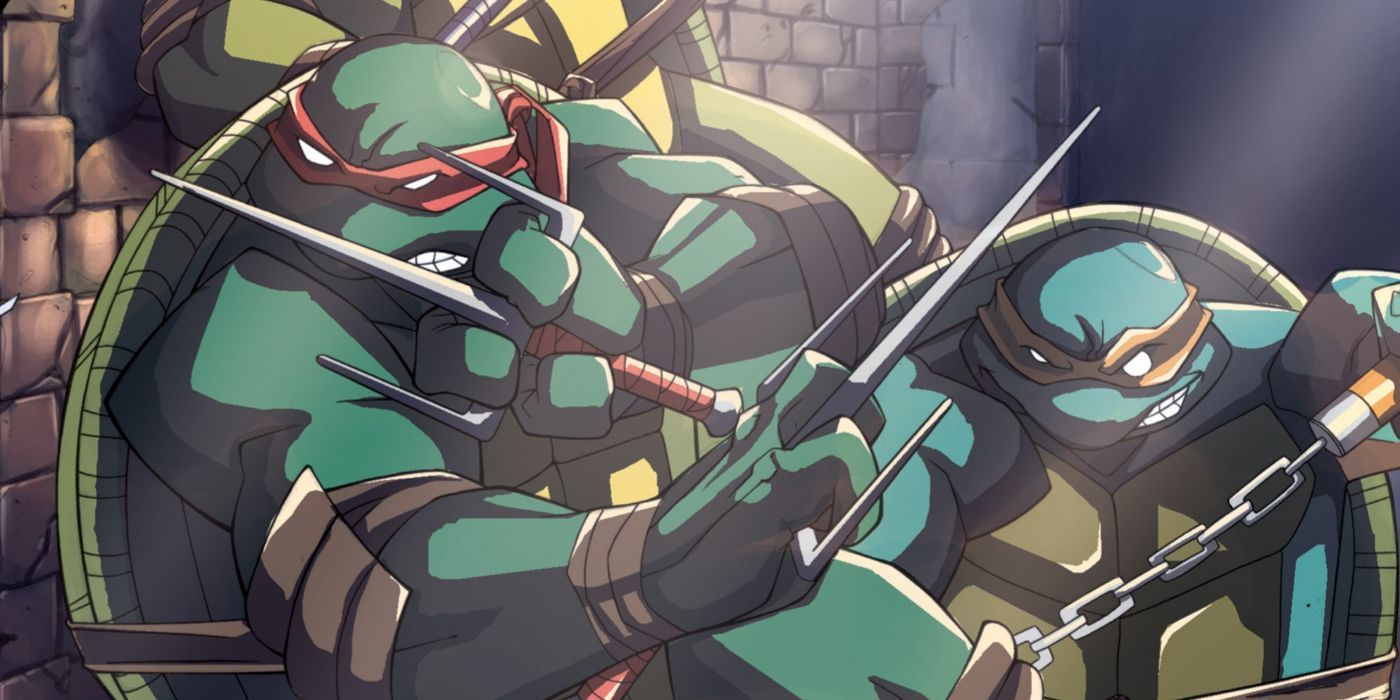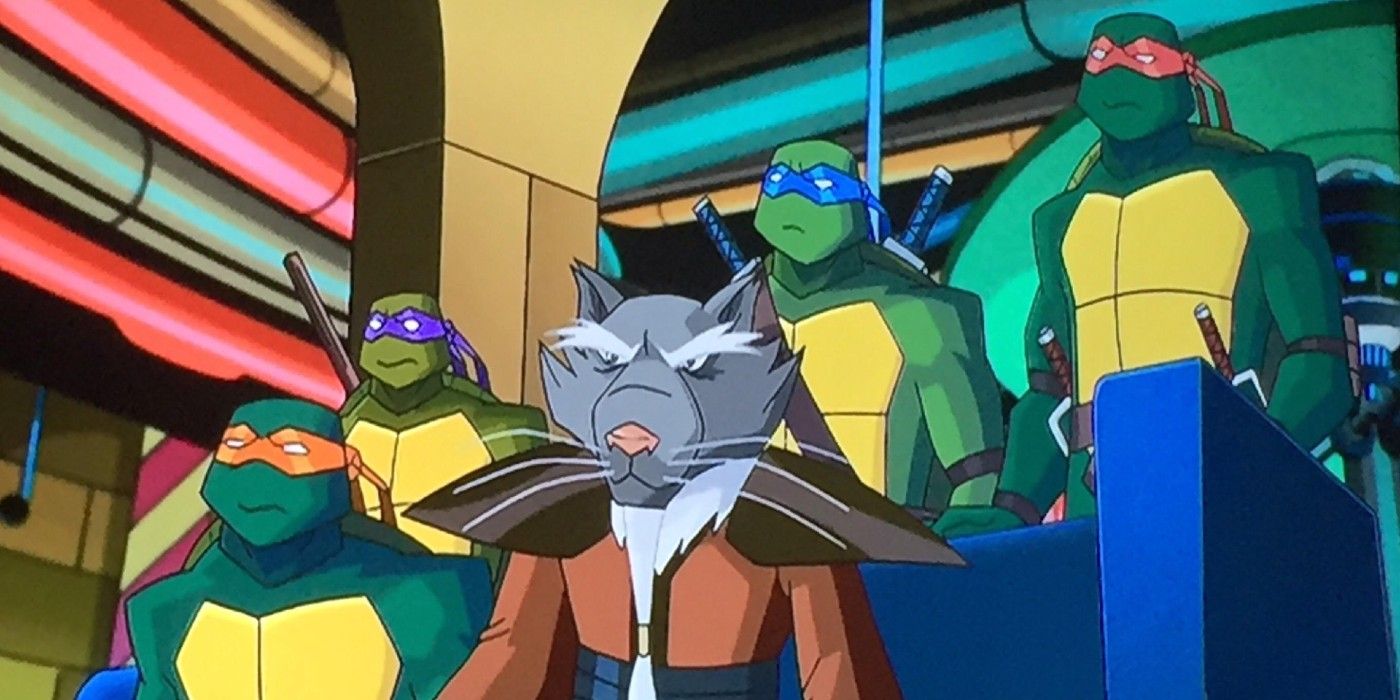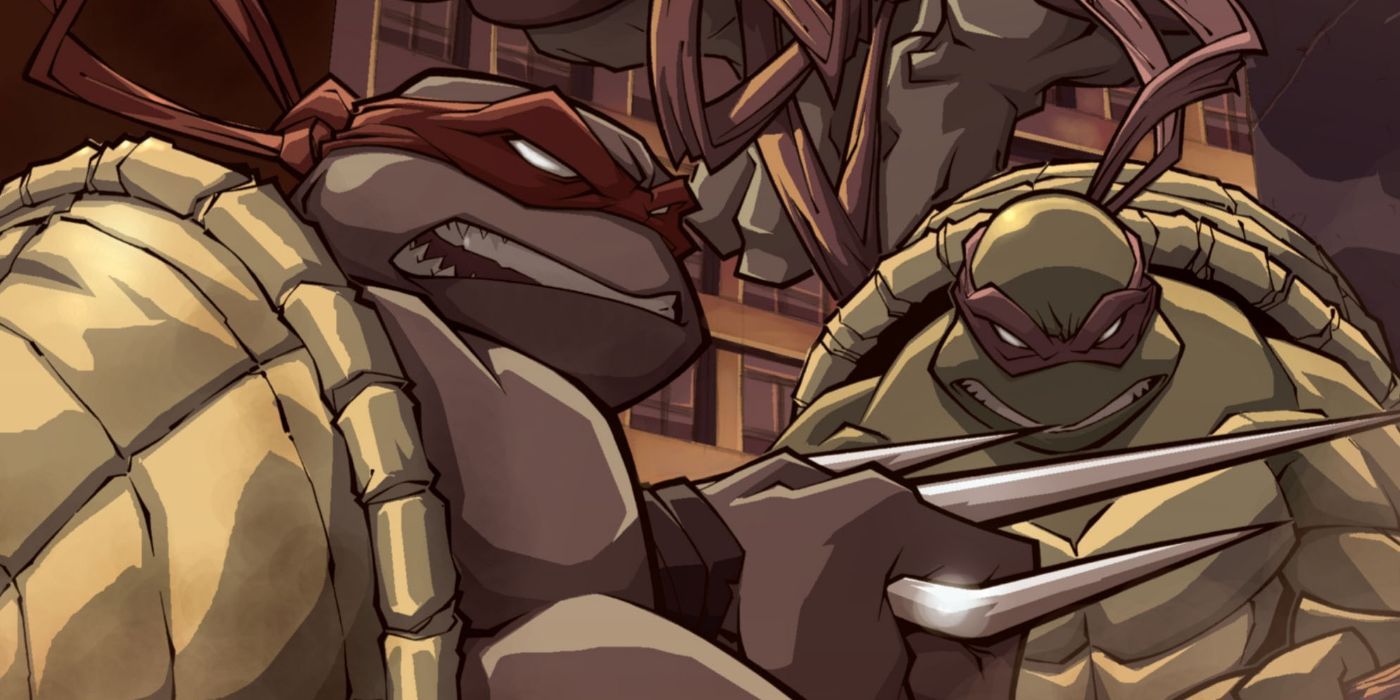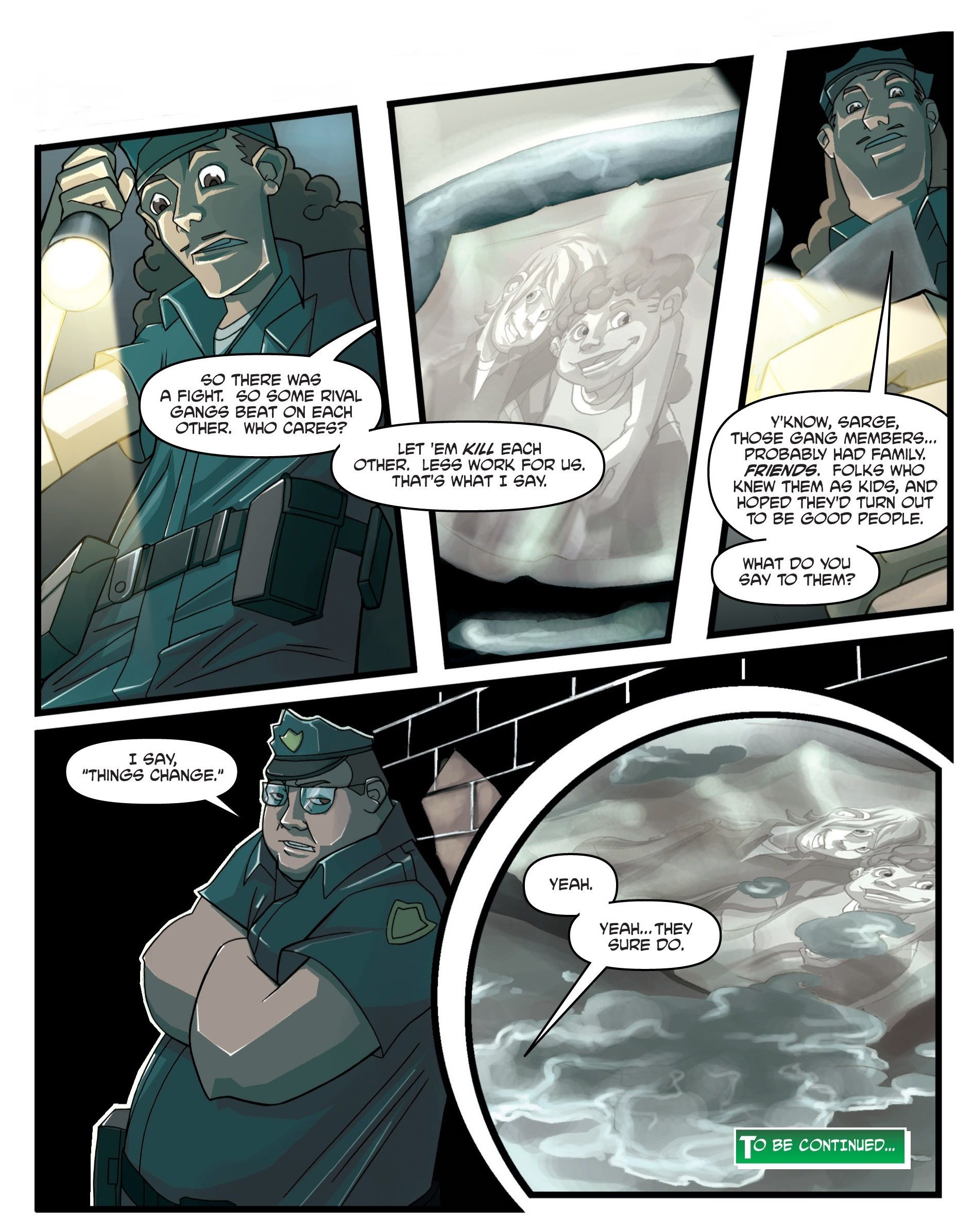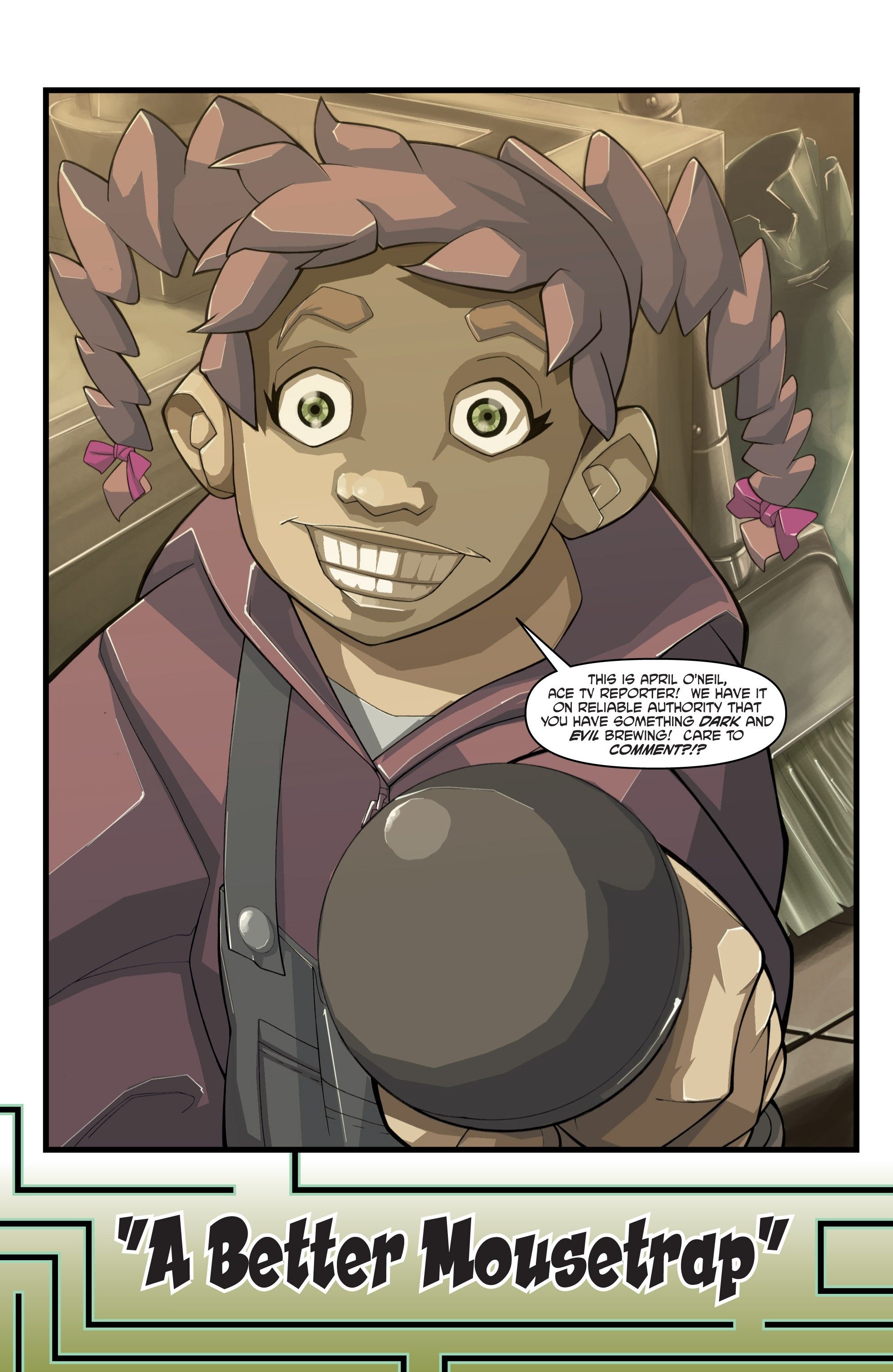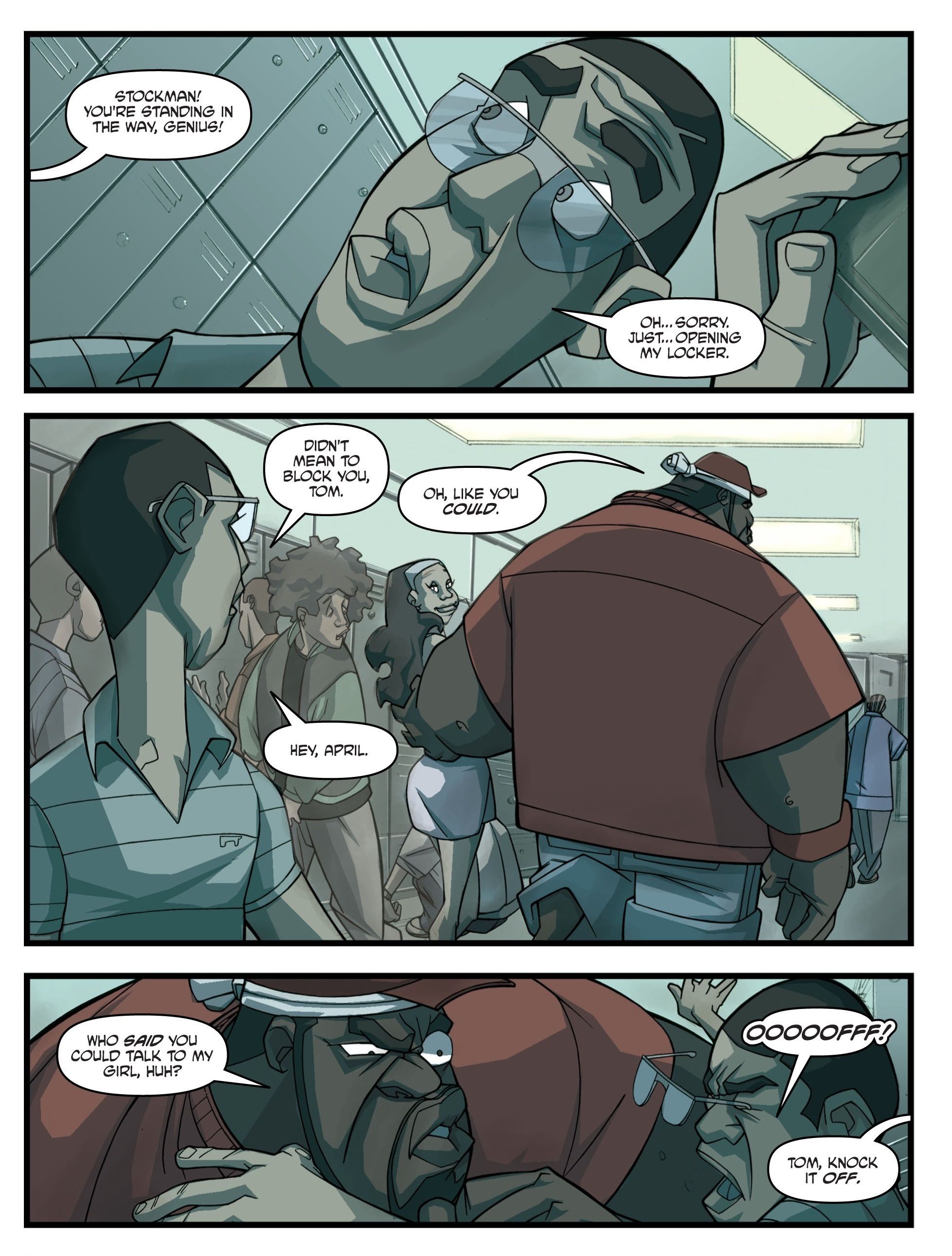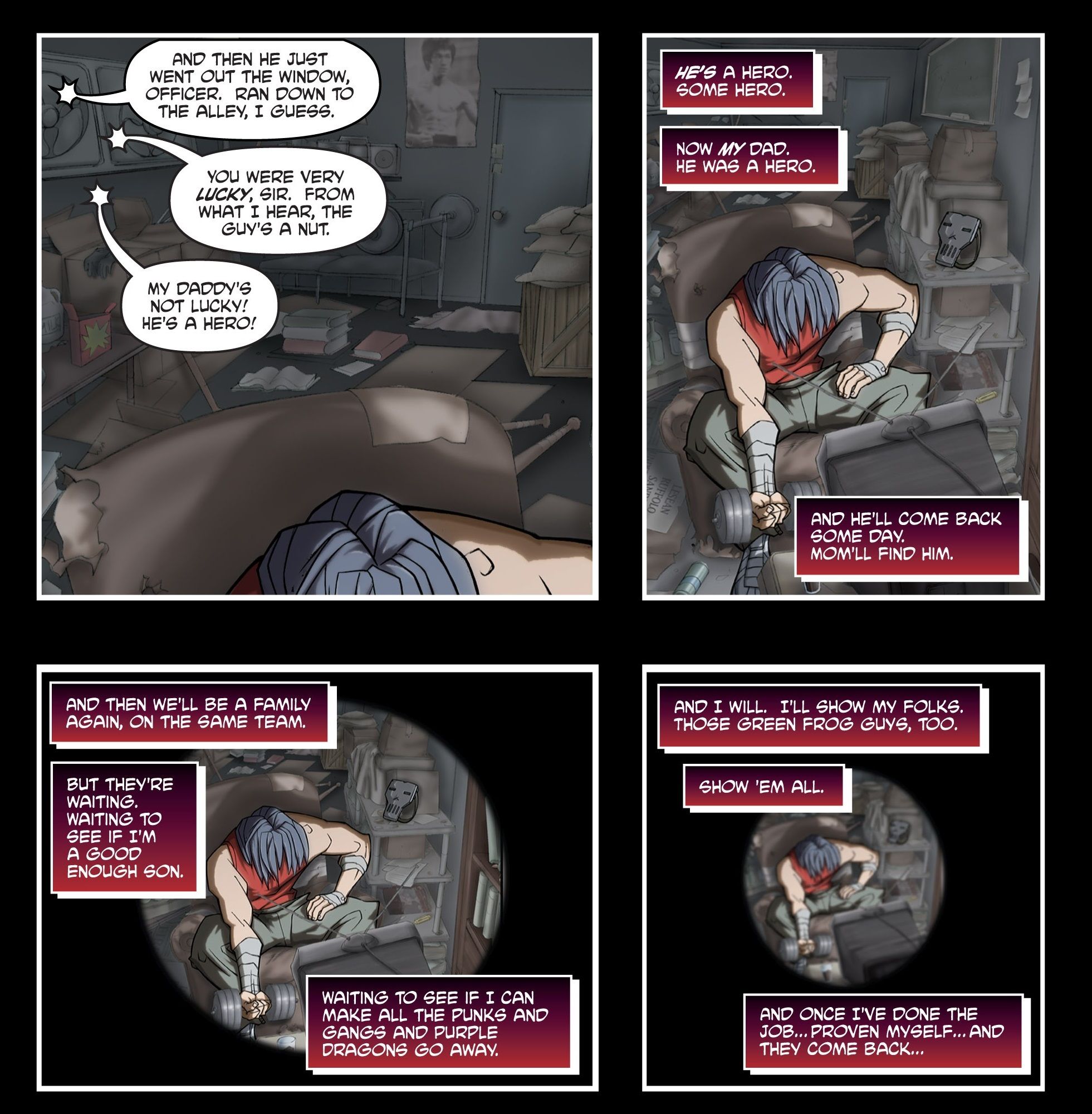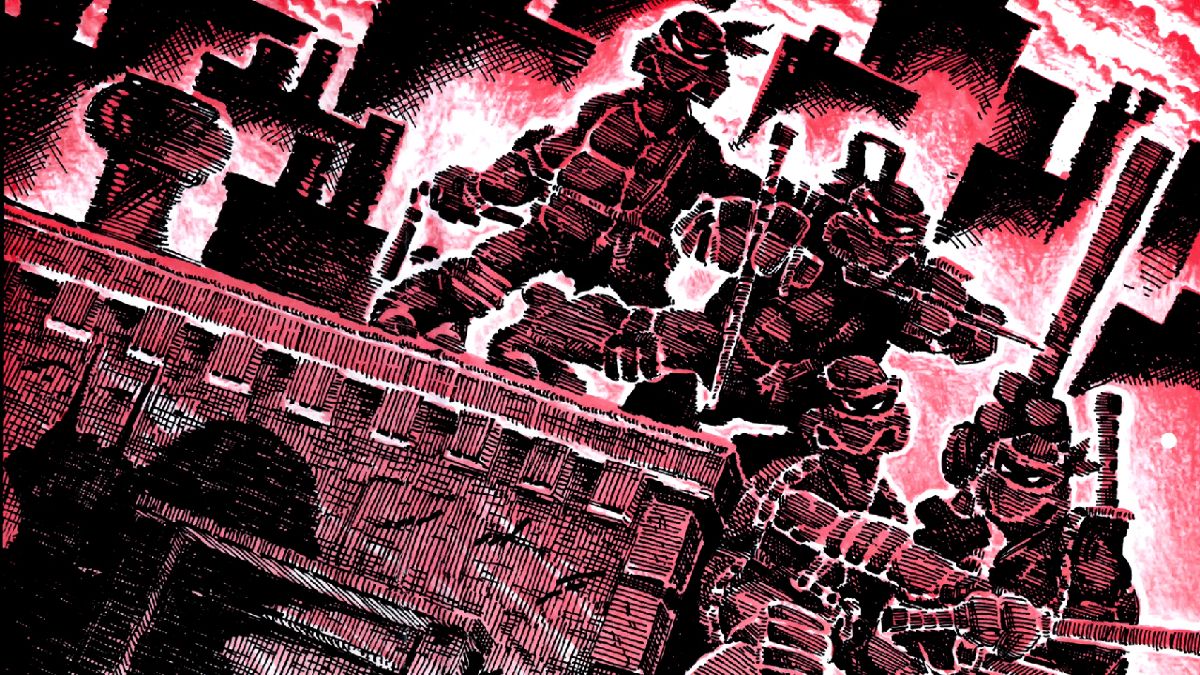Welcome to the 13th installment of Nostalgia Snake, a look at 2000s revivals of 1980s properties, revivals now so old they're also quite nostalgic. (Hence the snake of nostalgia eating itself.) This week's suggestion comes from Frank Dana, who wrote me on Twitter to say: "The TMNT animated franchise: Nostalgia Snake? That's a full on Touroboroducken!" And if you have any suggestions, just contact me on Twitter.
The 2003 relaunch of the Teenage Mutant Ninja Turtles as a licensed kids' property with a stylish, new Saturday morning cartoon does have an odd convergence with 1980s revivals dominating comics sales charts in this era. While properties like G. I. Joe and ThunderCats had been dormant for years, TMNT hadn't quite been so inactive. 1999 saw the end of Image's crack at reviving the original (and not exactly kid-friendly) Mirage Studios comic continuity. Turtles co-creator Peter Laird would have his own go at a revival in 2001 with a relaunch of the Mirage series. It wasn't a sales success like the original '80s black and white comics, but longtime fans were happy to see Laird return and continue the mythos.
Only the diehards seemed to care that much about the Turtles at the millennium's dawn. Given just how popular the franchise had been at the start of the '90s, and how severely its star had dimmed by the decade's end, it's understandable why many had written it off as a peculiar fad from the days of acid-washed denim. Unlike today, there was no inexplicable fever to reboot every property that had once held the public's fancy, so a revived TMNT wasn't a sure bet.
THE TURTLES' INEVITABLE RETURN
As early as 2001, however, Mirage Studios was pitching another cartoony take on the Turtles to Warner Bros. in the hopes of launching a new show on the WB! or Cartoon Network. After Warners declined, a new series was conceived. One that held few ties with the 1980s syndicated cartoon, with its harmless, smiling Turtles, unhealthy pizza fixation, and the endless parade of catchphrases and bad puns. This new series would go back to the Turtles' gritty, self-published roots…as much as Saturday morning would allow.
2003's Teenage Mutant Ninja Turtles (often listed simply as TMNT) debuted on February 8, 2003, on FOX's Saturday morning block and remained on the air for seven years. Peter Laird held significant creative control over the series, ensuring the content stayed true to the original, pre-"cowabunga" canon with darker stories and a far more complex continuity. For Turtles fans, the 2003 series is the equivalent of the '90s Batman: The Animated Series or X-Men. It's faithful to the lore -- occasionally violent while remaining just tame enough to pass by the censors.
During the series' launch, 1980s nostalgia was invading comic shops, with some revived titles actually outselling Marvel and DC's most popular heroes. Producing a new, colorful TMNT series that played on that same nostalgia likely seemed like a no-brainer. Handing the license to Dreamwave, publishers of the monster-hit Transformers revival, also made sense. Adding some credibility would be writer Peter David, one of Marvel and DC's most popular writers since the late 1980s. Although he had little history with the Turtles, David accepted the gig because his daughters had been fans in the past.
Given the glossy production values of their Transformers comics, and the company's reputation for reinventing computer coloring techniques, fans had high hopes for Dreamwave's TMNT series. Peter David has indicated there were issues from the beginning, however. An edict from above declared the opening issues had to adapt specific TV episodes. David wrote on his website:
As fun as the series has been to produce, writing the first four issues under the constraint that they had to be based on the first four animated episodes resulted in issues that were, I think, not representative of what the series could have been. Plus, of course, one runs the risk of seeming superfluous since you’re just rehashing stories people can see animated and for free.
David's refusal to do lazy adaptations of existing stories is admirable, and fans of the cartoon might enjoy the new angles he's taken for the stories. Marvel's Classic X-Men series was an odd precedent, as that title would feature back-up stories that took place simultaneously with the issue's reprint story. This technique allows the audience to see events through a different perspective, offering insights into a villain's motivations or expanding the scope of the original story.
DREAMWAVE TAKES ON THE TMNT
Joining David was artist LeSean Thomas, whose work reflected the manga-inspired period that followed the success of artists like Joe Madureira and Humberto Ramos. While his layouts were energetic, his style didn't quite match the show's designs, however. It's also disappointing that the heavily rendered, anime-flavored colors Dreamwave was so famous for at the time appear so muted here.
The first issue of Dreamwave's TMNT (rereleased digitally by IDW as Teenage Mutant Ninja Turtles: Animated 2003) provides some backstory for the Turtles' fight with the Purple Dragon gang, the scene that opened the first episode, and was itself an homage to Mirage's very first Teenage Mutant Ninja Turtles comic in 1984.
David tells the story of two New York kids who eventually take very different paths. One grows up to become NYPD officer Frank Callahan (though he's called Ronnie in the issue's solicitation for some reason). His childhood buddy, however, joins the Purple Dragons. Interestingly, this is Kenzo, the prominently featured Dragon with the blue power-mullet. His onetime friend appears to be the cop based on Turtles co-creator Kevin Eastman, who appeared in a few episodes -- partnered, naturally, with a cop who resembles Peter Laird.
The issue opens with a flashback to Callahan and Kenzo as kids, posing for a picture at a sidewalk photo booth. Through quite the coincidence, nearby is the kid taking home a glass container of baby turtles. In the commotion that caused Leo, Don, Mikey, and Raph to fall into the sewers, Callahan and Kenzo's photo also slips into the drain. Back in the present day, Officer Callahan finds himself rushing to catch up with both the Turtles and Kenzo, all while dealing with a sergeant who's convinced he's either insane or consuming goofballs. The issue has a surprisingly melancholy conclusion.
The second issue moves on to a retelling of the episode "A Better Mousetrap," which details April O'Neil's first meeting with the Turtles. This is another instance of the show going back to the original Mirage continuity, as April is an employee of scientist Baxter Stockman and not the ace TV reporter from the movies and 1987 series. The story's told from April's perspective -- specifically, it's the dream she experiences after meeting the Turtles and passing out. David homages April's previous incarnation, establishing she had naive dreams of becoming a famous reporter as a child.
The next issue shifts the perspective to Baxter Stockman, offering up numerous flashbacks while also recycling some action sequences from "Attack of the Mousers." David's been going for a more adult tone in this series, weaving darker themes (and humor) into the more family-friendly cartoon material. This issue is the darkest yet, allowing Stockman to narrate the tale and elucidate his severe issues with women. Though you won't find any evidence of this in the show, David has Stockman reveal how his sexual frustrations and unhealthy preoccupation with a teenage classmate, also named April, have inspired his career as a mad scientist.
"Meet Casey Jones" serves as the basis for the fourth issue, as David combines scenes from the episode to flashbacks to Casey's past. While quite loyal to his original Mirage appearances, the show did retcon a past between Casey and the Purple Dragons, establishing his father as one of their victims. The comic goes into greater detail dramatizing the senior Jones' death, and hints that Casey's unpredictable behavior is caused by brain damage he incurred during an adolescent encounter with the Dragons.
This issue diverges the most from what's presented on the show, establishing Casey's father as violently erratic and indicating that Casey holds on to a fantasy that his parents will return to him if he's only able to prove himself worthy. The show could go to some dark places, but you'd never see anything this unnerving on kids' TV.
CHANGES COME, TOO LATE
It's clear David was trying to make each issue as engaging as possible, in spite of the edict to "adapt" already existing material. Issue 5 was the first to break free of this restriction, but by then, the book was nearing its conclusion. Dreamwave's TMNT ended with issue #7 (David says the team was half-finished with a four-part arc called "T4: The Turtlenator," already advertised by Dreamwave, that was canned). The adaptation edict kneecapped the title's momentum from the first issue, preventing it from finding an audience.
Considering how many '80s revivals were already on the stands by 2003, it's also conceivable the fad was burning itself out. It's also possible that the audience eagerly anticipating the next G. I. Joe or ThunderCats issue didn't share a similar affection for "Turtle Power." The Turtles broke big in the late 1980s, peaking around 1991 and then declining in popularity as the '90s continued. The average twenty-something comic shop consumer in 2003 might've been just a little too old to carry any nostalgia for the more kid-friendly incarnation of the Turtles. And the 1980s heyday of finding comics on spinner racks and magazine stands were long over by 2003, meaning any kid who did meet the revamped Turtles on Saturday morning likely never saw this comic. Still, the title's an interesting experiment and likely one of the strangest chapters in Peter David's long career.

